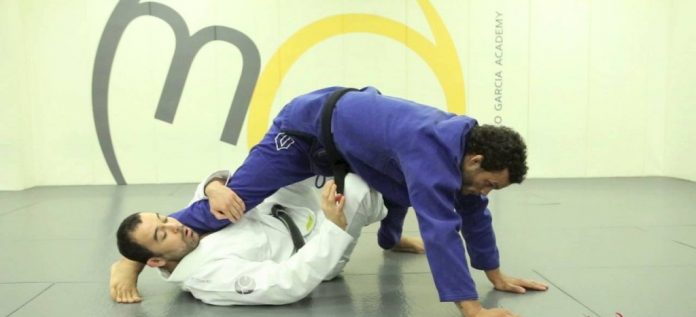
The X-Guard is an advanced open guard variation that is very attack-oriented. From the X-guard, you can play a diverse offensive game while staying relatively safe. Understand how to enter, retain and attack from the X-Guard and you won’t need another guard variation. In terms of attacks, sweeps are right there for the taking. To get a submission, you’ll need to work a little bit, but leg locks are not far away too.
Once you pass the beginner phase of Jiu-Jitsu, playing closed guard is going to get replaced by open guard experimentation. The X-Guard is often the target of blue belts, mostly due to convenience. It is practical, it is easy to obtain and students often find their way into it from scrambles. Those that are looking to work from the half guard, often get to the X-guard as an extension.
The guard itself is very versatile and is not hard to maintain. That said, people have ways of passing it and you need to be ready to react. It is not as secure as the closed guard, but it is one of the best open guards out there. The reason is that there’s virtually no distance for you to control as you’re directly beneath the opponent. Furthermore, it is your whole body against the legs of your opponent, which gives you a huge advantage. Master the X-guard early in your BJJ journey and it’ll serve you all the way.
X-Guard Basics
The X-Guard is essentially an open guard variation although not many see it as such. Some think of it as a half-guard variation and there’s logic to this stream of thought. If you get it against a standing opponent then you’ll most likely think of it as an open guard. If an opponent stands from your half guard though, you might see it differently, No matter how you enter, the mechanics of the X-guard are the same. And so are the attacking options.
In truth, entry to the X-guard is often the hardest part. Once there, you’re virtually halfway through a sweep. The X-guard is available from all kinds of open guards. Usually, the butterfly guard, shin-to-shin guard, single leg X-guard and even the closed guard are common entry positions. The half guard and deep half guard are usually entry points of opportunity as well.
The x guard has you on your back, with your feet controlling one leg, and the arms the other. This renders the opponent’s base useless and gives you great control. The idea is to have one of your legs on your opponent’s hip and the other behind their butt on the same side. The knees should be strong and the aim is to keep them apart, but not excessively. The other leg of the opponent should be over your shoulder, with your arm around it. The palm of your arm should grab just below the knee, providing complete control over the limb.
From the X-guard, you can sweep very easily or go for a different attack. In terms of guard retention, be prepared for a short transition. Both the Single Leg X-guard and the Half Guard are right there, depending on the opponent’s reactions.
X Guard Sweeping Options
The deal with the X-Guard is that it provides you with an easy means of disrupting the balance. The opponent might be able to keep their posture, but not their base. If you employ sleeve or wrist control with your free arm, you’ll also deal with the posture. Sweeping from the X-guard is not hard. Actually, all you need to do is decide which direction you like to sweep towards.
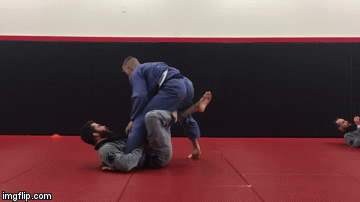
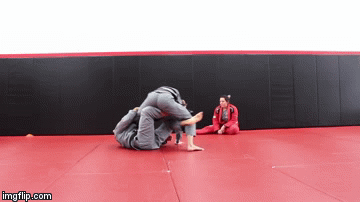
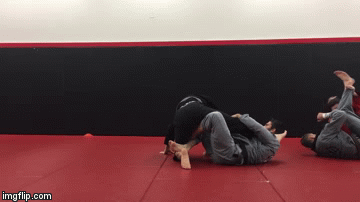
Leg Locks From The X-Guard
Apart from sweeping, the X-guard is also a good position to hunt for submissions. In those terms, nothing is easier to get than leg locks. This is understandable, as you’re in a guard that places you between the opponent’s legs. Even more so, you have great control over both lower body limbs.
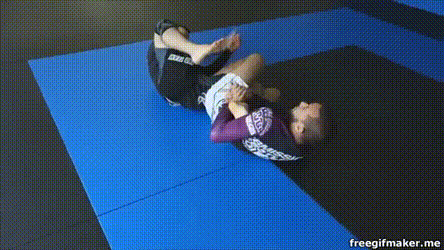
Master The Ashi Garami Position: https://bjj-world.com/john-danaher-dvd-instructional-review/
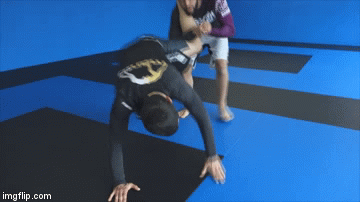
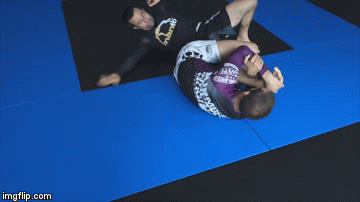
A Few More X-Guard Attacks
The X-guard is primarily a sweeping position or a leg locking gateway. However, there are also a few more attacks available, that do not include the legs. Namely, there are such triangle and Omoplata options, a well as the odd armbar, when in the Gi.
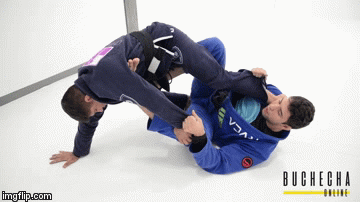
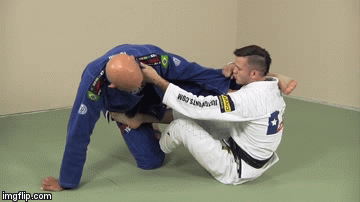
Video Source
You Might Also Be Interested in:
The Best Open Guard Retention Concept video you will ever Watch!
The Art Of Linking BJJ Submissions Together
The Complete Sneaky BJJ Rat Guard System
The 9 Best Leg Lock DVD Instructionals For Grapplers
The Leg Lasso Guard – A Masterclass On Playing And Passing
The Mark Of a True Strangle Artist – Killer Ezekiel Choke Details


![Darce Choke Encyclopedia – Origins, Mechanics and Variations [2025] BJJ, choke, Brabo, BJJ Darce Choke, D'arce Choke, Darce BJJ Choke](https://bjj-world.com/wp-content/uploads/2017/11/JungPoirierLeeYahoo-218x150.jpg)











![Slicin’ Calves Mikey Musumeci DVD Review [2025] Slicin' Calves Mikey Musumeci DVD Review](https://bjj-world.com/wp-content/uploads/2025/04/slicin-calves-mikey-musumeci-dvd-review-218x150.png)
![Jiu-Jitsu For Old Guys Guard Retention Bernardo Faria DVD Review [2025] Jiu-Jitsu For Old Guys Guard Retention Bernardo Faria DVD Review](https://bjj-world.com/wp-content/uploads/2025/03/old-guys-guard-retention-bernardo-faria-dvd-review-218x150.png)
![X-Guard Trickery Kyle Sleeman DVD Review [2025] X-Guard Trickery Kyle Sleeman DVD Review](https://bjj-world.com/wp-content/uploads/2025/03/x-guard-trickery-kyle-sleeman-dvd-review-218x150.png)
![Countering with Crab Ride Anthony Budion DVD Review [2025] Countering with Crab Ride Anthony Budion DVD Review](https://bjj-world.com/wp-content/uploads/2025/03/countering-with-crab-ride-anthony-budion-dvd-review-218x150.png)






![Knee Lever John Wayne Sweep Adam Wardzinski DVD Review [2024] Knee Lever John Wayne Sweep Adam Wardzinski DVD Review](https://bjj-world.com/wp-content/uploads/2024/12/john-wayne-sweep-adam-wardzinski-dvd-review-100x70.png)
![Basic Closed Guard Jasmine Rocha DVD Review [2024] Basic Closed Guard Jasmine Rocha DVD Review](https://bjj-world.com/wp-content/uploads/2024/11/basic-closed-guard-jasmine-rocha-dvd-review-100x70.png)
![Shoulder Lock Mastery Zach Green DVD Review [2025] Shoulder Lock Mastery Zach Green DVD Review](https://bjj-world.com/wp-content/uploads/2024/12/shoulder-lock-mastery-zach-green-dvd-review-100x70.png)


![Mastering The Crucifix Alexandre Pereira DVD Review [2025] Mastering The Crucifix Alexandre Pereira DVD Review](https://bjj-world.com/wp-content/uploads/2025/01/mastering-the-crucifix-alexandre-pereira-dvd-review-100x70.png)
![Roger Gracie Guard Passing System DVD Review [2025] Roger Gracie Guard Passing System DVD Review](https://bjj-world.com/wp-content/uploads/2025/02/roger-gracie-guard-passing-system-dvd-review-100x70.png)
![Reverse Arm Bar System Andrew Kerfoot DVD Review [2024] Reverse Arm Bar System Andrew Kerfoot DVD Review](https://bjj-world.com/wp-content/uploads/2024/10/reverse-arm-bar-system-andrew-kerfoot-dvd-review-100x70.png)
![The Empty Half Guard Michael Currier DVD Review [2025] The Empty Half Guard Michael Currier DVD Review](https://bjj-world.com/wp-content/uploads/2025/03/empty-half-guard-michael-currier-dvd-review-100x70.png)
![Neil Melanson DVD Bundle Review: Filthy Brutal No Good Attacks [2024] Neil Melanson DVD Bundle Review: Filthy Brutal No Good Attacks](https://bjj-world.com/wp-content/uploads/2024/10/neil-melanson-dvd-bundle-review-filthy-attacks-100x70.png)
![Master Scissor Sweep Ryan Scialoia DVD Review [2025] Master Scissor Sweep Ryan Scialoia DVD Review](https://bjj-world.com/wp-content/uploads/2024/12/scissor-sweep-ryan-scialoia-dvd-review-100x70.png)
![Dima Murovanni Kill The Collar Tie BJJ Trendsetters DVD Review [2024] Dima Murovanni Kill The Collar Tie BJJ Trendsetters DVD Review](https://bjj-world.com/wp-content/uploads/2024/09/dima-murovanni-kill-the-collar-tie-dvd-review-100x70.png)
![How to Double Leg Anyone Kevin Lee DVD Review [2024] How to Double Leg Anyone Kevin Lee DVD Review](https://bjj-world.com/wp-content/uploads/2024/11/how-to-double-leg-anyone-kevin-lee-dvd-review-100x70.png)


![Highlight Hip Throws Christian Ozbek DVD Review [2025] Highlight Hip Throws Christian Ozbek DVD Review](https://bjj-world.com/wp-content/uploads/2025/01/highlight-hip-throws-christian-ozbek-dvd-review-100x70.png)

![Reverse De La Riva System Mikey Musumeci DVD Review [2024] Reverse De La Riva System Mikey Musumeci DVD Review](https://bjj-world.com/wp-content/uploads/2024/11/reverse-de-la-riva-system-mikey-musumeci-dvd-review-100x70.png)
![Best Marcelo Garcia Techniques by Team Marcelo Garcia DVD Review [2025] Best Marcelo Garcia Techniques by Team Marcelo Garcia DVD Review](https://bjj-world.com/wp-content/uploads/2025/02/best-marcelo-garcia-techniques-dvd-review-100x70.png)
![X-Guard Trickery Kyle Sleeman DVD Review [2025] X-Guard Trickery Kyle Sleeman DVD Review](https://bjj-world.com/wp-content/uploads/2025/03/x-guard-trickery-kyle-sleeman-dvd-review-100x70.png)
![Nicholas Meregali No-Gi System DVD Unpacked: A Detailed Review [2024] Nicholas Meregali No-Gi System DVD Unpacked: A Detailed Review](https://bjj-world.com/wp-content/uploads/2024/09/nicholas-meregali-no-gi-system-dvd-unpacked-review-100x70.png)
![Understanding The Distance On Top Gui Mendes DVD Review [2024] Understanding The Distance On Top Gui Mendes DVD Review](https://bjj-world.com/wp-content/uploads/2024/10/distance-on-top-gui-mendes-dvd-review-100x70.png)

